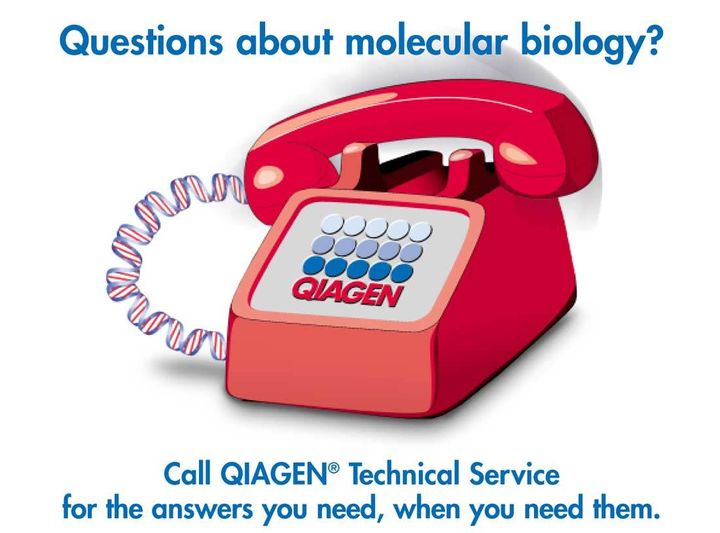
The headline above was created for a Qiagen ad that won a response award from Science Magazine.
There are so many ways that marketers can improve the results of their marketing communications. The big four are targeting the right audience, creating better content, selecting the right media, and choosing the best times to reach your audience. In this post, I want to focus on creating better content.
Effectively using the building blocks of marketing
In their marketing classes, most students learn the 4P’s are marketing. That’s what I learned too. When I started practicing marketing and began to understand it more deeply, I found that the 4P’s are inadequate. To better help my clients and teach my students, I created another model that uses seven elements. I call it the 7 Building Blocks™ of Marketing. It contains three important elements that are missing in the 4P’s? The branding elements of Corporate Image and Positioning and the Marketing Information System, which is a tool for continuously monitoring what is going on in the marketplace, measuring performance, and making the necessary adjustments to survive and thrive in an ever-changing business world. Branding is essential for building a relationship with your target audience at both the corporate and product levels and the Marketing Information System is critical for market awareness, keeping score, and making adjustments amenable to buyers.
- Corporate Image. Create an image of your company that gives buyers good reasons to do business with you. If you prefer the word brand, you could think of corporate image as your corporate brand.
- Positioning. Create an image of your products that give buyers good reasons to choose them over competitive alternatives. To achieve that, you have to build sufficient uniqueness into your brand so as to limit the competition. You can think of positioning as your product brand, which may include or be totally separated from your corporate brand. The corporate brand Coca Cola is included in the product brand Diet Coke, but is totally separated from the product brand Tab.
- Product. Make sure that your content makes it crystal clear what your product is and how it will benefit the buyer.
- Price. Make it clear that whatever your price, buyers will be better off paying that price to insure the level of quality they want without causing them harm.
- Distribution. Make it clear where buyers can conveniently find, buy, and use your products online and off.
- Promotion. Your communications content is part of the Promotion building block. Within that Promotion umbrella, you may choose to promote other products or offer sales promotions (incentives to buy quicker such as discounts, coupons, rebates, and premiums).
- Marketing Information System. If you do not build measurable codes in your content, how will you know what responses or sales were triggered by the content? How will you learn what to do to make your next communication more effective? You won’t. With social or online media, coding and measuring is so much easier. There are tools you can use that will tell you what specific promotion generated each response. You can embed codes in off-line media too. For example, you can put a bitly in place of a URL. Each bitly can tell you exactly what promotion generated each response. If properly built and employed, your MIS will not be perfect, but you will get good enough answers to make more right decisions.
A graphic representation of the seven building blocks is shown below.

Develop the right structure
Once you select the right elements in your communications, it is important to properly configure them. As you may have learned in chemistry, you can structure the elements of the Periodic Table in different ways. One configuration can be less valuable than another. Take carbon for example. When it is configured as graphite, it might be worth pennies. When it is configured as diamond, it can be worth many thousands of dollars. Translating this concept to marketing, the Universal Marketing Structure™ (UMS™) helps content creators create more successful communications. Marketers that follow UMS guidelines can communicate effectively with prospective buyers without forcing them to read the entire communication. Depending on the media chosen, content creators will use all, or any combination, of the following parts of the UMS.
- Headline. Data shows that, on average, 83.3% of buyers read and remember the headline, if the main benefits you want to communicate are not in the headline. Most will miss them.
- Body text. The body text explains the benefits introduced in the headline. It provides more information for those that want to learn more. It embodies the concept “the more you tell, the more you’ll sell.”
- Close. When people are ready to buy, they usually jump down to the close. The close should do four important things - (1) solicit a buying action (ask the reader to take the next step), (2) tie-in with the headline (since the benefits in the headline are the most important, the close should remind you of those benefits), (3) end the communication (while this seems trivial, some buyers have a problem when a communication does not have a logical conclusion, and they will blame you for the problem), and (4) contain a marketing information system code so the success of the communication can be measured.
- Photo/Graphic. Photo and graphic elements help to visually communicate the benefits of the product, make the communication more attractive, break up the body text into bite-sized pieces so it is easier to ready and remember, and sometimes serve as a size reference when product size is important.
- Format. The format makes it easier for the busy or lazy buyer to get the information they need without forcing them to read the entire communication.
- Signature. The signature enables the company to use branding elements - name, logo, and slogan - to help the buyer remember, and feel more comfortable buying, the brand.
- Everything else. There are many other elements that help a communication to be more successful such as colors, type fonts, design, and selling psychology. Rather than make the model unwieldy and difficult to remember, these elements are lumped into the “Everything Else” box.
A graphic representation of this structural framework is presented below.

Focus on benefits
Once content creators employ good uses of the 7BBs within the UMS framework, they are well on their way to creating a more successful communication. The best communications focus on the benefits rather than rely on features to sell products. For example, a feature might be that the product is red. The benefit of red to buyers might be – it is more easily noticed, warm, or exciting. Experienced marketers know that benefits are more effective at selling products than features alone. They make sure that the content makes the benefits to the target audience clear.
Creating more effective content
The hardest part of creating more effective content is learning how to do it. You have to want to learn and improve each time you do it. Once you learn, executions become so much easier and more effective. If you “close the loop” by employing an effective marketing information system, you have just about everything you need to create more effective content. Best of luck.
